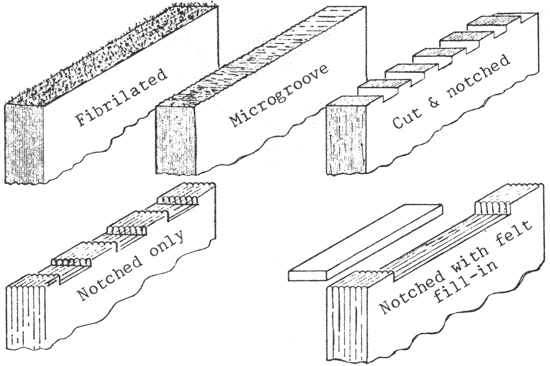

In my recent review of GLAISTER'S GLOSSARY OF THE BOOK (ANL D8O 78) I noted the sentence from Glaister's entry for "adhesive binding": "It is possible to leave the signature folds intact at head and tail [when cutting away the spine preparatory to gluing], giving the illusion of sewn sections to the finished book." I went on to confirm that publishers are exercising this option with vigor, and maintaining humor in the face of unwanted bibliographical complexity, suggested in the future we'd want to distinguish "perfect adhesive bindings" from "imperfect" ones.

No sooner had the review appeared than I came to understand that the situation is, in fact, yet more complicated. A. G. Martin's FINISHING PROCESSES IN PRINTING (London and New York: Focal Press, 1972), a well organized, thorough, well illustrated review of modern bindery practices from "Paper Management" through "Packing and Despatch," devotes a full chapter to adhesive binding systems. His illustration, from page 233, of alternate Methods of spine preparation for adhesive binding is reproduced below. He also cites a possible advantage of the notched spine:
Experimental methods of spine preparation include one technique of notching into a book that retains its spine folds. The deep notch obtained is then filled with a soft felt pad and the book bound in the usual way. By leaving the head and tail folds intact it is hoped to prevent the breakdown of the spine bond which often starts at these points. (page 235)
This hope aside, the illusion of intact signatures must certainly appeal to publishers seeking ways to contain rising costs.
The implications for bibliographic description of Twentieth Century books now seen to me far more serious.
It seems quite possible, even probable, that sheets of some titles have been issued in both sewn and adhesive bound forms. Careful observation is thus required. Further, it is not at all obvious how one night construct a consistent descriptive terminology.
There seem to be two principal directions. The more attractive would be to follow bindery industry practice, using resources like Martin. In most cases, however, only destructive examination would yield sufficient evidence, and this is most unappealing. To rely on evidence supplied by publishers or binders would both be difficult in practice and violate the cardinal principle of working from the object in hand.
The other direction is a taxonomy within which a bibliographer could be as specific as the evidence at hand permitted. One night argue the family of bookbindings has two genera: sewn bindings and adhesive bindings. The genus: sewn includes such species as tight back, recessed cord, French, all-along, spiral, stapled, etc. The genus:
adhesive includes species distinguished by the method of spine preparation (knife cut, fibrillated, cut and notched, etc,) and perhaps by type of adhesive (caoutchouc, animal, hot melt, PVA, etc.) as well. Although it would require care and considerable work it should be possible to organize each genus into a system of logically related species and sub-species.
There is a certain irony in the fact that modern printing technology tends to produce greater textual uniformity while binding technology continues to offer yet richer opportunities for variation which nay signal the need for bibliographical investigation.